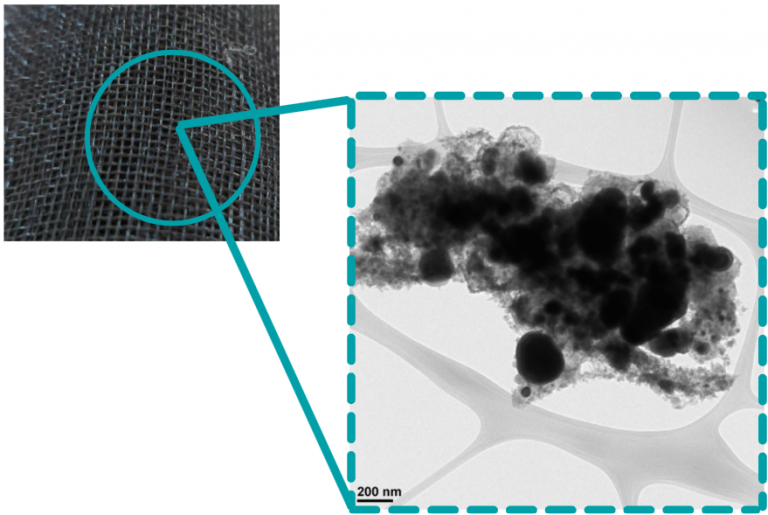WATER TREATMENT
The growth of industry, urbanization and the human population, together with the increasing use of fertilizers and pesticides in agriculture, have a notable influence on the deterioration of water quality natural and increases pollution problems and consequently the supply of drinking water. For this reason, at Smallops we have developed a product (OPS) for water treatment.
GET YOUR BUDGET
Get in touch with us and we will make you a personalized budget. If you have any kind of doubt, ask us about our references and you will know that other companies already trust Smallops to acquire their Fe nanoparticles.
Water is a vital resource for food, hygiene and human activities, as well as for agriculture and industry. Since ancient times, man has established populations of it in areas close to water courses, not only because it is essential for life, but also because it is useful for many of the activities that he develops. Due to this, rivers have frequently been the recipients of much of the waste generated by man and that finally ends up in the sea.
WATER
Water is essential for the survival of all known life forms. Without it we could not live, and the truth is that we have less and less drinking water on the planet. That is why it is necessary to establish actions for water treatment.
POLLUTION AND WATER TREATMENT
As for water treatment processes, the problems are numerous and varied. According to UNEP (United Nations Environment Program), 2,000 million tons of water are polluted daily due to waste and warns that without urgent action to improve the management of these two million tons of waste that pollutes the waters, the situation will worsen.
This does not only affect the health of millions of people, especially the poorest, but also affects the marine ecosystems, in such a way that there is 245,000 km2 of marine dead zones, and to the climate, due to methane emissions that contribute to global warming. Besides, Spain is exposed each year to millionaire fines imposed by the European Union for non-compliance with current regulations.
In order to adopt solutions, it is necessary to know the possible causes and sources of contamination of the water environment. Aquatic pollution can be punctual (in the event that it is produced by a specific and identifiable emission source affecting a specific area) or diffuse (when the origin is not clearly defined and large areas are affected in which multiple sources of pollution coexist). issue). In general, we can consider as sources of contamination of the water environment, the urban sewagethe industrialthe agricultural/livestock, and the atmospheric contributions..
Likewise, we can classify the basic contaminants that can be found in natural waters into 4 groups:
- Organic pollutants, such as pesticides, hydrocarbons or surfactants.
- Radioactive contaminants, both natural and anthropogenic in origin.
- Biological contaminants, such as bacteria, fungi or viruses, all of which carry diseases.
- Inorganic contaminants, such as heavy metals.
OPS FOR THE ELIMINATION OF WATER POLLUTANTS
At Smallops we have a product from the recovery of olive oil waste. These are iron nanoparticles encapsulated in carbon that help eliminate different contaminants and provide different advantages in the process:
COMPETITIVE ADVANTAGES OF OPS
WATER TREATMENT
Thanks to OPS it is possible to remove heavy metals such as Cr, Cd, Ni, Cu and Zn, present in industrial wastewater such as that from the chrome plating industries in the automotive sector.
Thanks to OPS it is possible to remove pesticides such as 2,4-dichlorophenoxyacetic acids or 2,4-D present in industrial wastewater.
In the different wastewater treatment plants (WWTP) the application of OPS allows the elimination of sulfur compounds (H2S) present in the gas phase, which are the cause of bad odours.
Download a summary
COMMITTING TO R&D
The sweet water only represents the 2,5 % of the Earth's water, most of which is frozen. of her the 30,1 % is underground and the 0,04 % is what we can find in lakes, rivers, atmosphere… In other words, we only have access to an ephemeral percentage of the total water on the planet, so we must manage this resource properly and exploit it sustainably so that it does not run out.
Siendo conscientes del creciente y grave problema que presenta la contaminación de las aguas, en Smallops hemos apostado por la investigación para el diseño de una malla a partir de nanopartículas de hierro encapsuladas, procedentes de residuos oleícolas para el tratamiento de aguas contaminadas. Puedes consultar el proyecto here.

TEST THE PRODUCT
If you are interested in trying our product, contact us. We will solve all your doubts and we will provide you with all the information you need.
We are just a click away!

